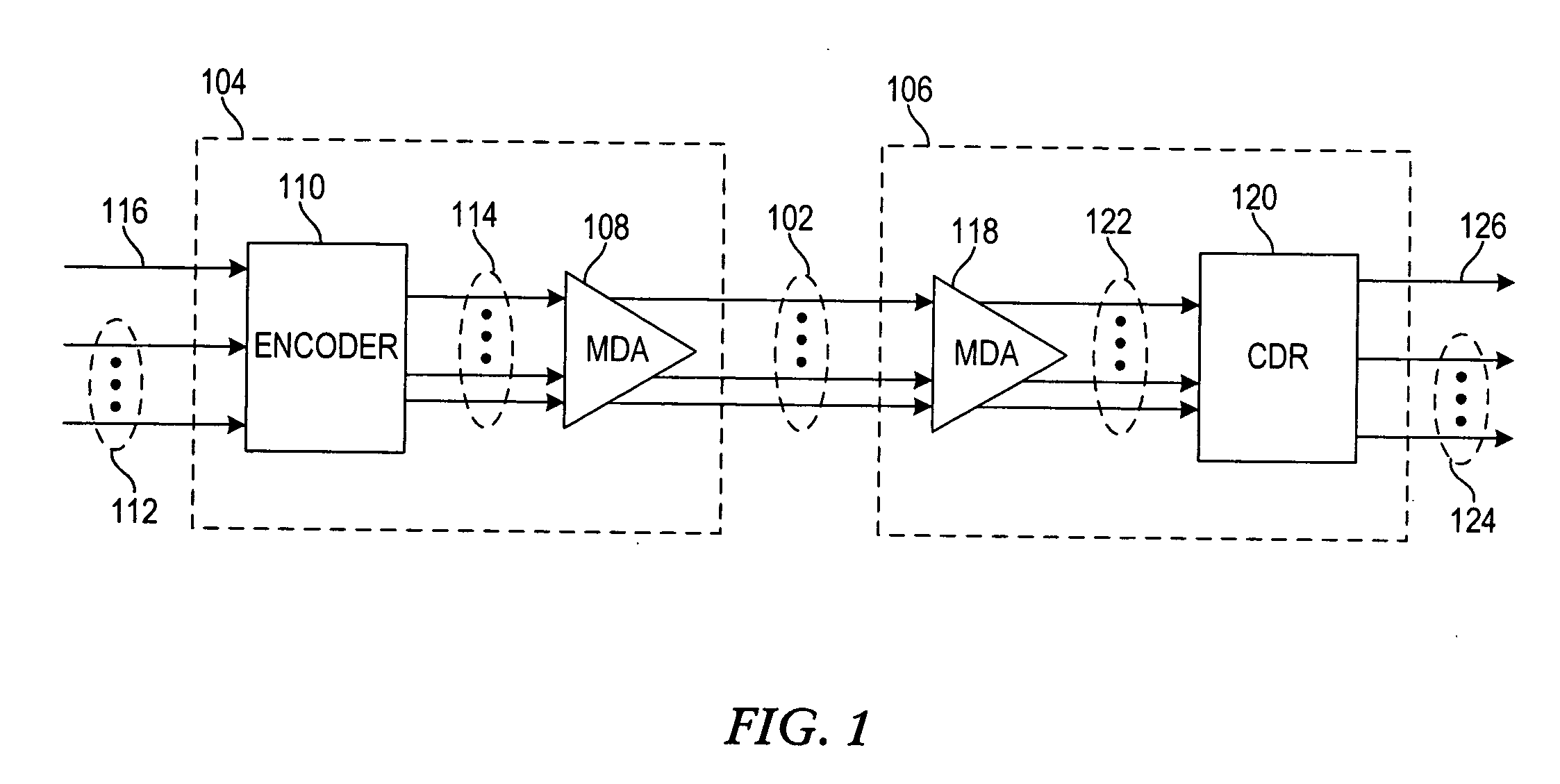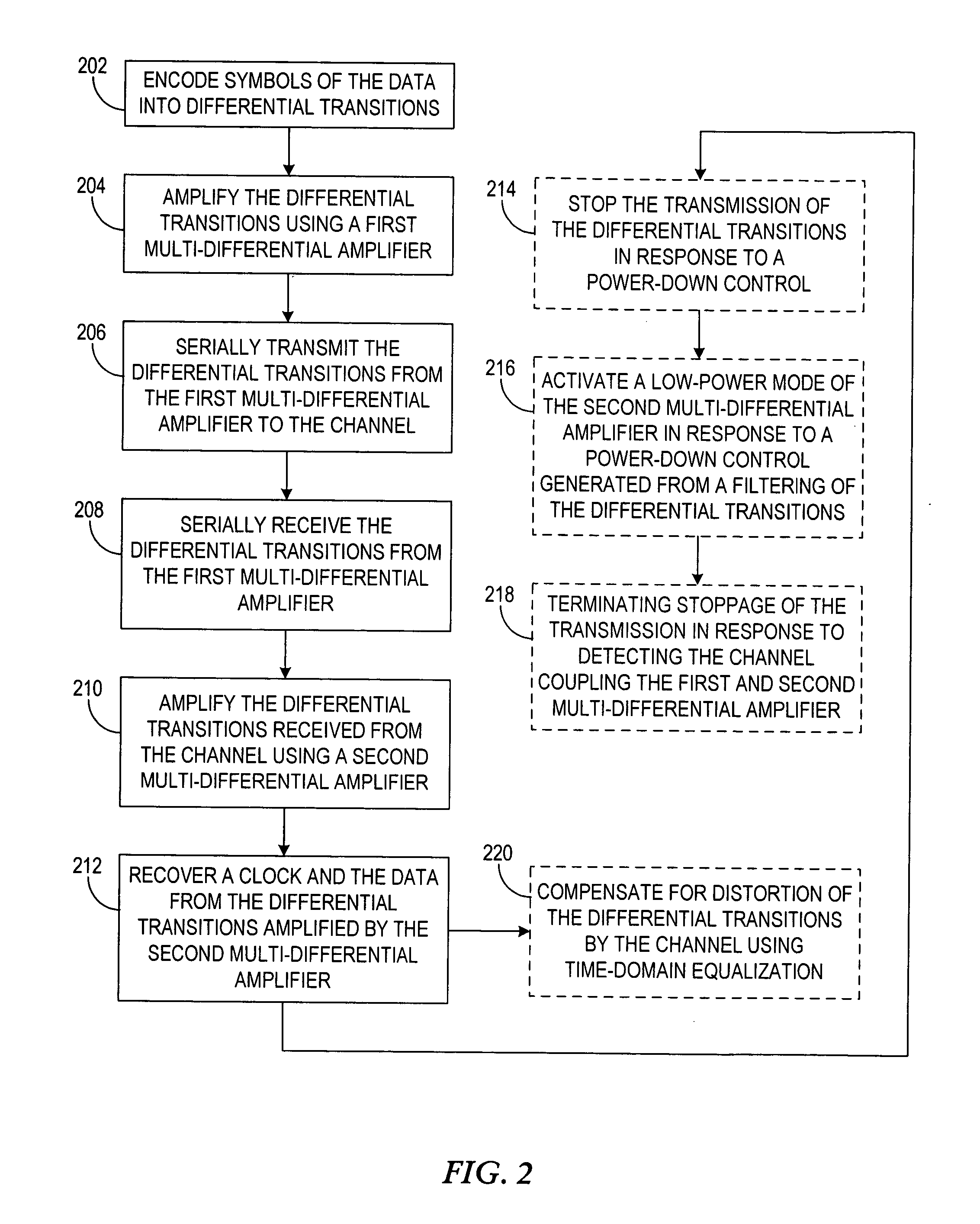Circuits and methods for a multi-differential embedded-clock channel
a multi-differential embedded clock and circuit technology, applied in the field of data communication channels, can solve the problems of limiting the propagation time of global clock, and limiting the bandwidth of data transfer by bus
- Summary
- Abstract
- Description
- Claims
- Application Information
AI Technical Summary
Problems solved by technology
Method used
Image
Examples
Embodiment Construction
[0016] Various embodiments of the invention use multi-differential signaling to communicate data from a transmitter to a receiver through a channel that has at least four signals. For each symbol of the data, the signals of the channel have a corresponding differential transition. Because each of the differential transitions communicating the data can be a differential transition between any two signals of the channel, the signaling is denoted multi-differential signaling. The differential transitions are serially communicated through the channel, such that the differential transitions nominally occur one at a time. Further, there is a differential transition for every symbol, such that a clock is embedded in the differential transitions. In contrast with an existing encoded-clock signaling using the 8b / 10b encoding, various embodiments of the invention provide embedded-clock signaling for which the clock can be recovered without using a phase-locked-loop.
[0017] For further discuss...
PUM
 Login to View More
Login to View More Abstract
Description
Claims
Application Information
 Login to View More
Login to View More - R&D
- Intellectual Property
- Life Sciences
- Materials
- Tech Scout
- Unparalleled Data Quality
- Higher Quality Content
- 60% Fewer Hallucinations
Browse by: Latest US Patents, China's latest patents, Technical Efficacy Thesaurus, Application Domain, Technology Topic, Popular Technical Reports.
© 2025 PatSnap. All rights reserved.Legal|Privacy policy|Modern Slavery Act Transparency Statement|Sitemap|About US| Contact US: help@patsnap.com



